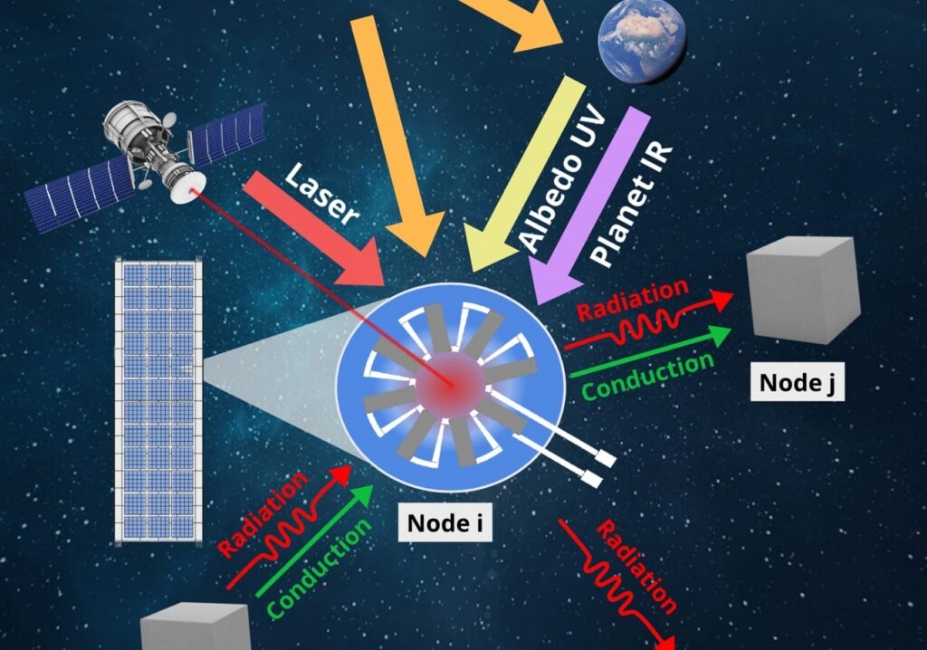
WiPTherm
Los CubeSats se están convirtiendo en una alternativa real para la exploración espacial. La investigación tanto de la tecnología como en la aplicabilidad de estas pequeñas plataformas ha sido objeto de gran interés durante los últimos años. Representan un mercado tecnológico emergente (con un crecimiento CAGR de 37.91 % en el período de 2017-2021) a la que están acudiendo numerosas aplicaciones. Los motivos son varios, pero destacan entre ellos tanto el bajo coste que suponen respecto a los satélites convencionales, así como el corto período de desarrollo.
Sin embargo, proporcionar la potencia necesaria para alimentar los dispositivos a bordo de los CubeSats, requiere cada vez de mayores superficies de placas solares, así como de una mayor eficiencia en el almacenamiento y distribución de la energía. Todas estas características, hacen del Energy Power and Storage (EPS) uno de los subsistemas más exigentes de los CubeSats. Por otra parte, posibilitar el acceso de estas plataformas a la investigación de escenarios del entorno espacial con una baja disponibilidad de energía, como las misiones de espacio profundo, también requiere de una previa mejora de este subsistema.
En este contexto, nos encontramos con otras fuentes de energía tales como los métodos de transferencia de energía a distancia (Wireless Energy Transfer, WET), los cuales suponen una alternativa a las vías tradicionales de suministrar energía a las plataformas (paneles solares y baterías), por lo que su viabilidad merece ser estudiada.
Con el objetivo de analizar una de estas metodologías, los miembros del grupo de investigación están involucrados en un proyecto europeo financiado dentro del programo Horizonte 2020 llamado WiPTherm (Wireless Power devices using micro-arrays of Thermoelectric generators). El funcionamiento del dispositivo WET consiste en la transformación de energía fotónica en energía eléctrica, a través de los gradientes térmicos generados, basándose para ello en el efecto Seebeck. Es, por lo tanto, una tecnología novedosa, limpia y barata, lista para diseñar, implementar y dirigir un innovador sistema WET, cuyos arrays de células del sistema Hybrid Photo-Thermoelectric Plasmonic (HPTP) son capaces de recargar las baterías sin necesidad de interrumpir el funcionamiento del CubeSat. El origen de la energía fotónica incidente en las células no será otro que un láser pulsado de alta potencia y largo alcance. Para ello, el control electrónico del láser conducirá el haz generador a un subsistema de distribución de haz, desde donde será enfocado para ser transmitido incidente a las celdas del generador HPTP dispuestas en el satélite. De esta forma, el láser podría operar a lo largo de miles de kilómetros. Entre los posibles conceptos de funcionamiento cabe destacar la posibilidad de alojar la fuente láser en un satélite (‘maestro’) desde el que apuntar y cargar las baterías del CubeSat (‘esclavo’).
Dentro del consorcio europeo, la Universidad de Vigo es la responsable del diseño del CubeSat, donde se instala el dispositivo HPTP. El impacto del sistema WET está siendo analizado de cara a la evaluación del diseño de la aeronave. En este contexto, es relevante mencionar que, entre los desafíos a resolver, los subsistemas térmico y estructural se encuentran entre los más críticos, de cara a garantizar la correcta operación del satélite.
Reconocimientos: Este proyecto ha recibido financiación del programa de Investigación e Innovación Horizonte 2020 de la Unión Europea en virtud del acuerdo de subvención No 863307, Ref. H2020-FETOPEN-2018-2019-2020-01.
Resto de socios del consorcio:
- IFIMUP − Institute of Physics for Advanced Materials, Nanotechnology and Photonics, Department of Physics and Astronomy, Faculty of Science, University of Porto, Rua do Campo Alegre 687, 4169-007 Porto, Portugal
- CeNTI − Centre for Nanotechnology and Smart Materials, Rua Fernando Mesquita 2785, 4760-034 Vila Nova e Famalicão, Portugal
- University of Limoges, CNRS, XLIM, UMR 7252, F-87000 Limoges, France
- INESC-TEC and Department of Physics and Astronomy, Faculty of Sciences, University of Porto, Rua do Campo Alegre 687, 4150-179 Porto, Portugal.
Galería
